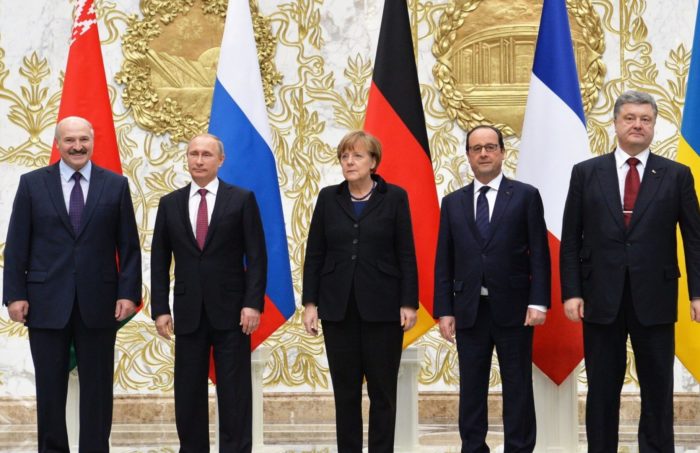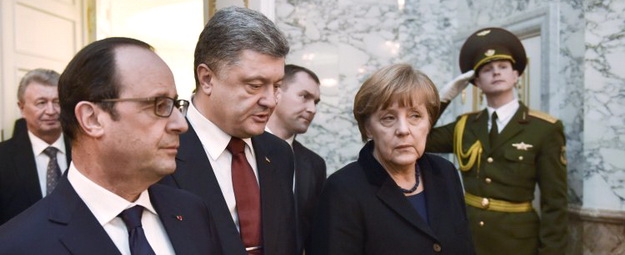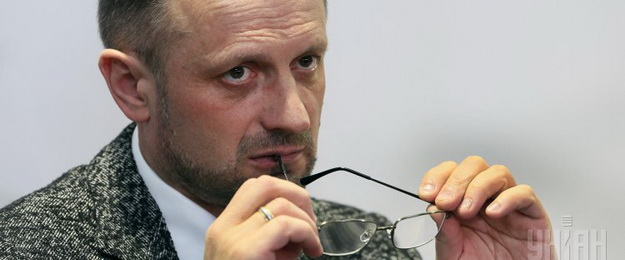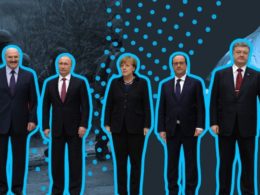Driving this view are fears of an economic crisis in Europe or Russian retaliation against the EU, as well as a pity for Ukrainians who are suffering every day of the war.
In stark contrast, supporters of justice believe that Ukraine and, for its part, the EU must not make unjust concessions.
The EU faced this same dilemma eight years ago when it chose appeasememt to in an attempt to contain any further regional escalation in the conflict. Let's see how the outcomes of that stance enabled the current war.
Following Russia's illegal annexation of Crimea and the invasion of the Donetsk and Luhansk regions by proxy forces in 2014, Ukraine appealed to the EU and USA for tough sanctions and arms supplies. They were imposed, but they were too mild and too short-term to force Russia to reverse course, instead only temporarily halting its invasion plans.
Western partners chose not to impose deterrent measures that would have yielded meaningful results, such as an oil embargo or blocking Russia from the SWIFT payment system. Furthermore, to avoid escalation with Russia, then-President Barack Obama vetoed any arms exports, instead supplying Ukraine with non-lethal equipment such as army rations, body armor, and first aid kits in 2014-2015.
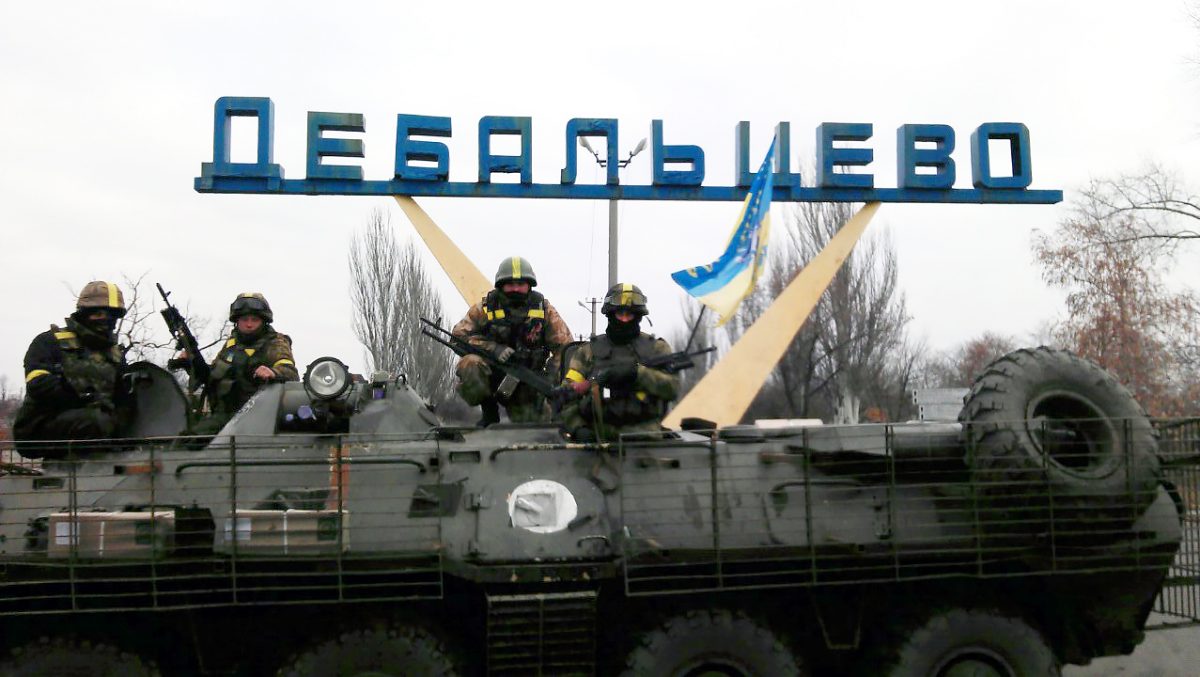
1. In 2014, Putin saw the West’s response as a show of weakness (and still does)
To slow down Russia’s war, France and Germany (later backed by the EU and United States) supported the Minsk Agreements of 2014 and 2015.
With ceasefire violations alongside unimplemented military and political provisions, the agreements in effect ceded much of Ukraine’s authority over the Donetsk and Luhansk oblasts. Kyiv was under intense pressure to make additional concessions to the Kremlin for their return. And neither of the Minsk Agreements even mentioned the status of Crimea.
This resembles the design of current initiatives aiming for an immediate ceasefire. Italy's proposal for Russian-Ukrainian negotiations on Crimea and Donbas and the lifting of sanctions in exchange for the Kremlin's withdrawal of troops from Ukraine (without punishment) is the most well-known. Additionally, independent experts have proposed treaties that include ceding territories to Russia as well as other negotiated compromises and concessions.
In 2014, the West theorized it could sufficiently dampen Putin’s imperatives with sanctions and thus avoid direct hostilities with the Kremlin.
The logic assumed that Putin respected international law and feared both NATO's reach and the West's reaction, implying that he would be content with compromise talks in exchange for de-escalating tensions. But then, as does he now, Putin fought and fights now for complete control over Ukraine.
"Vladimir Putin seeks to restore the Soviet empire’s zone of influence. Putin wants a defensive belt of obedient countries," recalled former French President Francois Hollande, who negotiated with Moscow in 2015.
As in his notoriously chauvinistic article "On the Historical Unity of Russians and Ukrainians", published in July 2021, Putin believes that Ukrainians and Belarusians are part of a triune Russian nation. He sees Ukraine as merely an occupant of what he terms "historical Russian lands" and therefore denies Ukraine’s existential right to statehood.
According to the RBC agency, the article became mandatory reading and an official manifesto for the Russian military. This demonstrated that Putin's obsession with eradicating Ukraine's existence is more important than securing Russia's borders or boosting domestic approval.
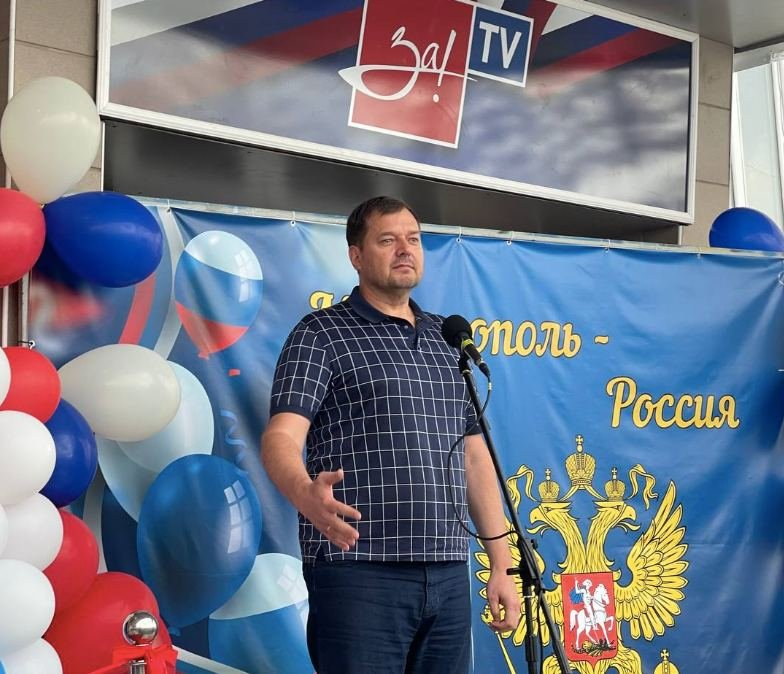
Russia saw the West’s focus on diplomatic compromise rather than economic hard power and a military response as a weakness to exploit.
After all, Russia had illegally annexed Crimea, then invaded the Donbas, and successfully avoided compensatory sanctions. Then it became a party to the Minsk II negotiations on Ukraine.
As Hugo von Essen and Andreas Umland, analysts of the Swedish Institute of International Affairs, concluded, the Minsk Agreements convinced the Kremlin that Russia could succeed in its land grab and that Europe and the USA did not have the collective political will to force a Russian retreat. Putin likely expected this, when Russia invaded Ukraine in February.
He will therefore prepare for a larger war in an attempt to terrify the world once again. Russian media outlets have already issued veiled threats of a nuclear attack or World War III. In addition, the Kremlin believes that Russia will adapt to sanctions, as it has since 2014, while the West will endure greater economic instability. Beyond the territorial battle for Ukraine, Putin believes he is fighting against the West. Note, for example, that after taking Crimea in 2015, Russia destabilized Syria, causing a major migration crisis for the European Union.
2. For the past eight years, the Kremlin's efforts to re-arm have gone unchallenged
Russia profited greatly from the absence of embargoes and so, despite sanctions, the Kremlin managed to modernize its military forces.
In 2014-2022, Russia commissioned numerous warships, including guided missile frigates, attack submarines, and missile-capable patrol ships and boats, all of which are now being used to attack Ukraine with Kalibr cruise missiles.
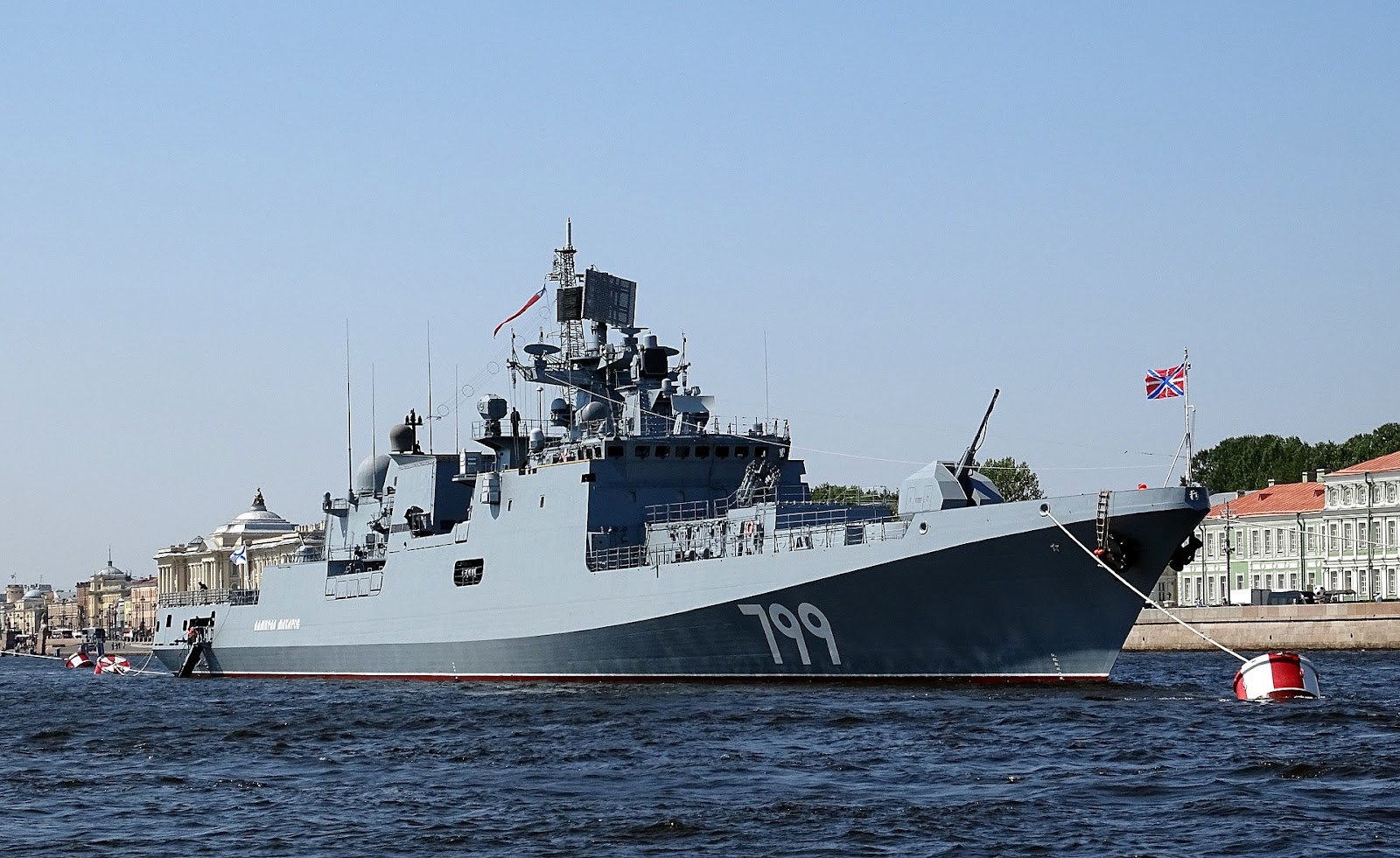
To increase their long-range capabilities, Moscow formed new brigades armed with Iskander (SS-26 Stone) missiles, again in use now.
The Kremlin also modernized more than 1.000 tanks, equipping them with imported thermal cameras, and commissioned more than 200 new BMP-3 vehicles.
Rearmament was undertaken in all branches of the Russian armed forces. Su-30 aircraft received new navigation equipment, K-52 helicopters were refitted with infrared detectors, and dozens of Su-34 bombers were ordered. Ground forces were outfitted with improved versions of BM-21 "Grad" and BM-30 "Smerch."
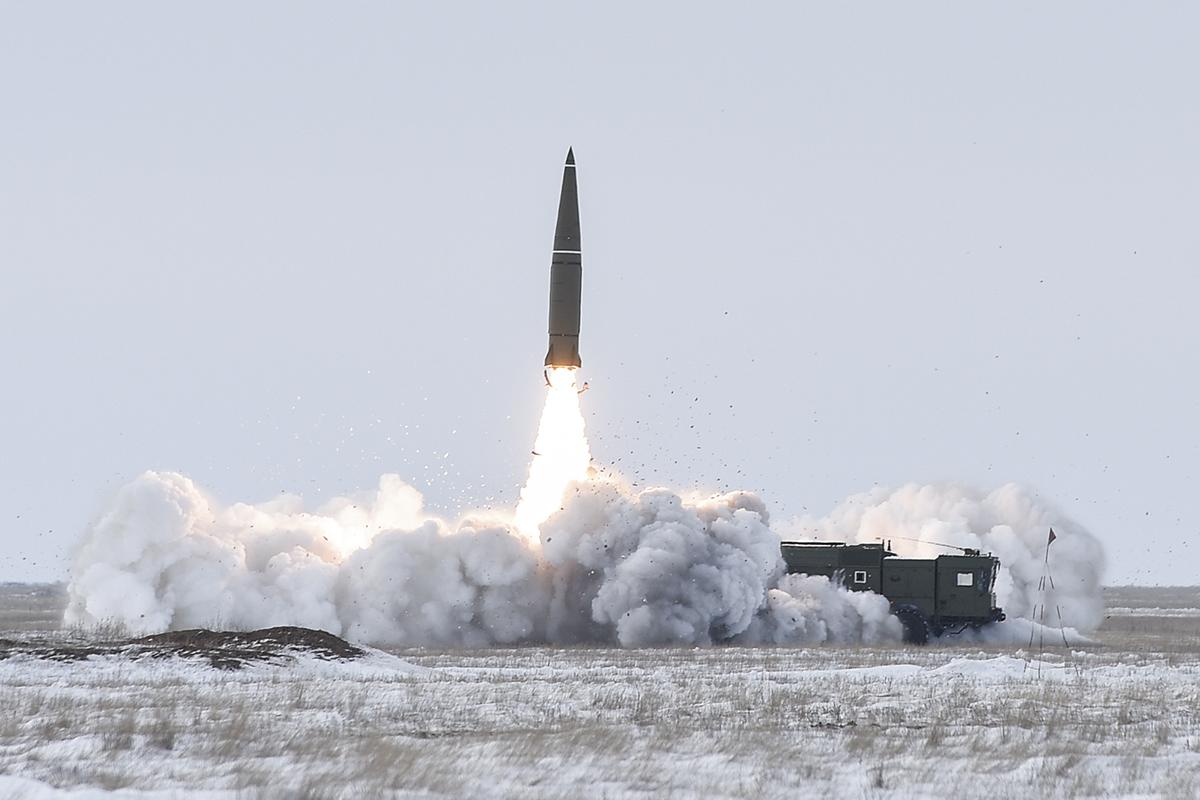
As witnessed, Russia long prepared for another attack, specifically on Ukraine, after which its remaining forces would become a genuine threat to NATO.
Similarly to now, some policymakers hoped in vain that sanctions would significantly reduce Russia's military budget, forcing it to redirect funds to its civilian economy. But eight years ago, this calculation failed.
Indeed, Russia has somewhat reduced military spending, but not to the levels of the 1990s and certainly not toward disarming.
And according to the War on the Rocks, if we count purchasing power parity (which reflects the state of the national economy), the Kremlin's army budget for the years 2014 through 2019 amounts to USD 200 billion today. Only the USA surpassed them in military spending.
3. Domestic “support” means Putin’s regime will not fall
The economic crisis of the 1980s forced then-British Prime Minister Margaret Thatcher to dramatically reduce the British fleet. However, this was not so with Putin
Since Russia under Putin is not a democracy, the president can both dismiss the needs of civilian society without fear of losing elections and maintain focus on geopolitical goals despite a stagnant economy.
Anyone in opposition to this status quo becomes a target of intimidation and is marginalized. Any public showing of protest is quickly suppressed by police. One of the former opposition leaders, Boris Nemtsov was killed in 2015. Another popular critic of Putin, Alexei Navalny, sits behind bars.
Meanwhile, more than 60% of Russian citizens in each age group approve of their country’s military actions in Ukraine, according to the Levada Center, the only independent pollster left in the country. A convincing majority also supports the annexation of Crimea and the seizure of part of the Donbas. No more than 10%
opposed the war on Ukraine.
This public mood results from the perception of Ukraine as a historic part of Russia torn away by Western influences and from a revanchist impulse to make Russia a superpower again (a status lost with the collapse of the USSR).
Thus to pause the war and wait until public opinion presses Putin for long-lasting peace is fanciful at best. Note that since February 24, millions of Russian citizens have emigrated to other countries.
However, if the West calls on Ukraine to make concessions for the sake of peace, a new type of Minsk Agreement may emerge. Moreover, history has shown how these peace deals have always favored Russia and its expansion plans. Why would this time be any different? Russian troops would remain near Kharkiv, Sloviansk, Zaporizhzhia, and the Kherson Oblast. It would afford Russia time to regroup and rearm for new offensives, and again ignore the welfare of civilian populations. It would mean that some sanctions might be lifted in exchange for compliance, as in the Iranian nuclear deal with the West.
4. Russia established a reign of terror over occupied territories
Despite all warnings from Ukrainians, proponents of an immediate ceasefire usually point to the need to alleviate the suffering of civilians caught in the crossfire. But that is not how events have played out.
After the Minsk Agreements, the temporarily occupied regions were ruled by Russian proxies.
For average apolitical citizens, at any time their apartment or business could be seized by militants. At any time they could be kidnapped and held in an undisclosed basement until relatives paid a ransom for their release. Businesses ceased operations, and local economies collapsed.
The fate of pro-Ukrainian activists has been much worse. Russian terrorists built a network of prison camps, including Izolyatsia, a former cultural center in Donetsk. There, people were imprisoned for their political positions and even civic activism.
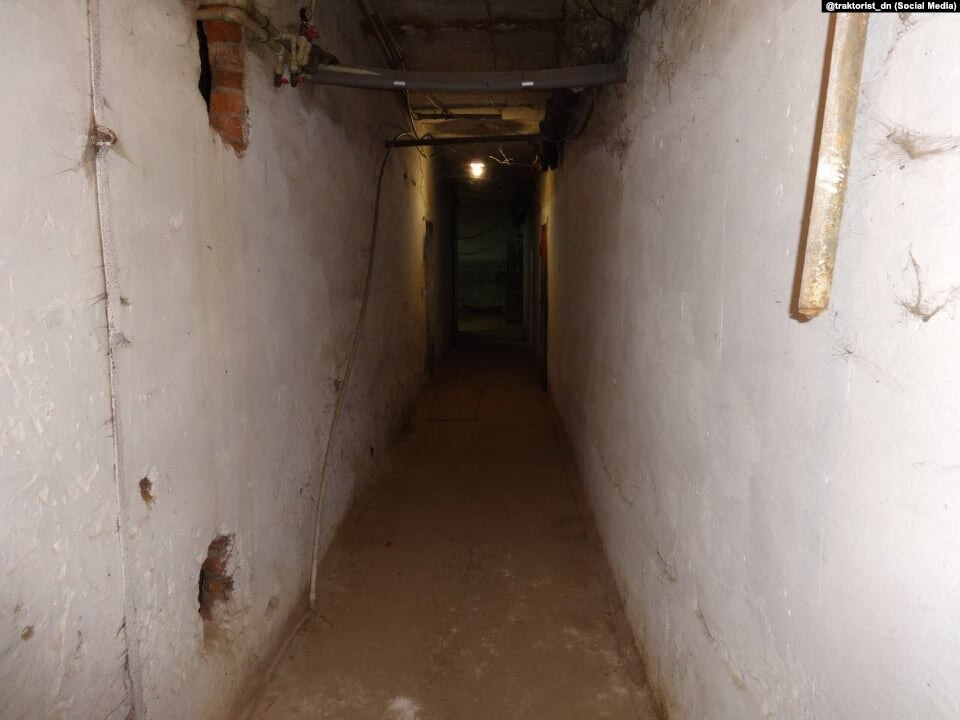
The journalist Stanislav Aseev was held in one for allegedly being a "spy," and the religion scholar Ihor Kozlovskyi was detained for posting wrong messages on Facebook.
Occupiers of Donetsk kept these hostages in inhumane conditions, torturing them, routinely beating them, and terrorizing them with mock executions.
Before Russia’s latest invasion, 276 Ukrainians were held captive by the so-called "Donetsk and Luhansk people’s republics" ("DNR-LNR") terrorist regimes. Another 241 political prisoners were held in Crimean prisons, among other modes of continuing repression. And, according to OCCRP, "organized crime reigns supreme" in all these occupied territories, making them even more dangerous.
In 2014-2015, more than 1.78 million citizens fled the occupied regions, becoming internally displaced persons after losing their homes and livelihoods.
Since February 24 of this year, residents of the Donetsk and Luhansk oblasts are having to endure unimaginable suffering from this war that the Minsk Agreements failed to prevent. Mariupol, Rubizhne, Popasna, Sievierodonetsk, Volnovakha – these and other cities have been destroyed by Russians.
Moreover, Russia and its proxies maintain a network of so-called “filtration camps.” Citizens of newly occupied territories are forced to undergo filtration, which includes extrajudicial detention, interrogations, tortures, and other human rights violations.
First public photos of Russian-run Donetsk concentration camp leaked online
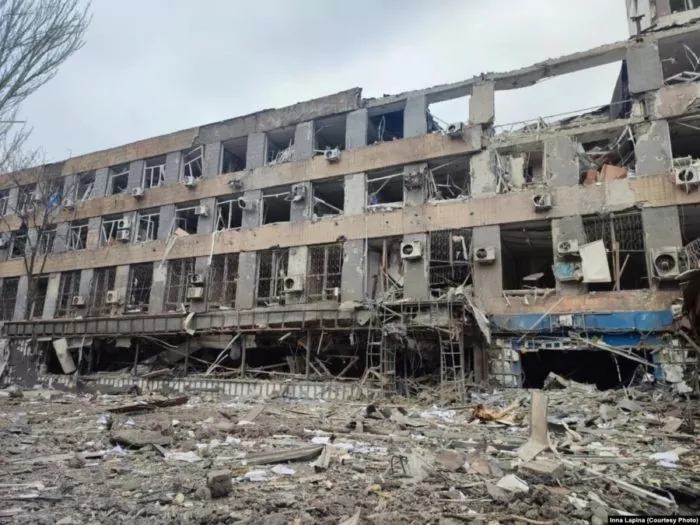
5. Russia uses people in occupied Ukraine as cannon fodder or deports them
Residents of already occupied regions are faced with yet another threat: forced conscription.
Russian proxies mobilize all men, which means a real manhunt. In Luhansk, for example, "LNR" representatives claimed gas leaks in an apartment building to lure people out of their flats and all men were detained on the spot.
Russia now holds night ambushes to forcibly send Donbas men to Ukraine war
Following that, the Russian military uses conscripts from occupied territories as cannon fodder
, resulting in heavy casualties due to the soldiers' lack of training and use of WWII-era military gear. They are then used for front-line attacks on Ukrainian fortifications to locate Ukrainian positions.
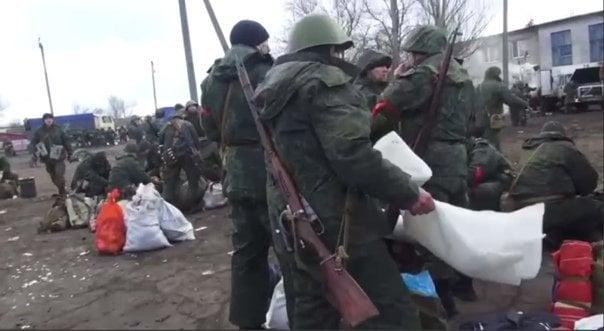
Repressive control by the Russians and their proxies over the occupied territories also includes carrying out forced mass deportations of residents. People are taken from their homes and transferred to remote regions of Russia like Sakhalin, while others receive certificates prohibiting them from leaving. Everything is propagandized as the protection of people from war.
Already more than a million people have been deported. Presumably, this is being done to bolster the demographics of Russia’s declining population and use Ukrainians as forced laborers.
As in the occupation of Donbas in 2014, the repression of pro-Ukrainian activists and community leaders is underway. The Russians also announced forced mobilization in the occupied territories to strengthen troop numbers. Ordinary people's lives under occupation are even more difficult than they were eight years ago because routes to and from Ukraine are obstructed. Refugees must first travel to Russia and then attempt to enter the European Union.
6. Russia gained a bridgehead (and sense of impunity) with its nuclear terrorism
From 2014 to 2022, a number of experts called for cooperation with Russia to make the world safer: apart from other motivations, to prevent a new nuclear arms race and tackle climate change. But in 2022, attempts to appease Russia backfired in this area of global concern as well.
Using the Crimean peninsula as a bridgehead, Russians in February mounted an offensive from the south and quickly seized the Zaporizhzhia NPP, the largest nuclear power plant in Europe. The occupiers now hold it as hostage in order to intimidate Ukraine and the rest of Europe.
According to the Energoatom agency, since the beginning of August, Russians repeatedly shelled the facility (like August 7th, August 11th and August 25th, and September 9th) almost hitting the spent nuclear fuel storage and eventually disconnecting the station from the electric grid. According to the IAEA, there is “the very real risk of a nuclear disaster that could threaten public health and the environment in Ukraine and beyond."
Moreover, Russians are positioning artillery near the plant to prevent the Ukrainian army from returning fire. In one of the power units, occupiers stored weapons and ammunition. Presumably, Moscow believes that having avoided severe consequences for previous violations of international law, it would remain unpunished even now.
As Rafael Grossi, director of the IAEA, stated, the Zaporizhzhia nuclear power plant is out of the agency's control, and the principles of nuclear safety have been violated. On 9 September, he noted that shelling has caused a complete blackout in Enerhodar and compromised the safe operation of the Zaporizhzhia NPP, calling for the establishment of a Nuclear Security Protection Zone around the plant. However, Russia has repeatedly rejected calls to establish a demilitarized zone around the plant as it continues to use the nuclear power plant as a shield for its military operations.
What’s the worst that can happen at Zaporizhzhia nuclear power plant? Four scenarios
Why nothing else but Ukraine's victory over Russia is acceptable
In 2014, Ukraine urged the world to stop Russia, but the West was hesitant to act and chose what seemed a lesser evil, freezing the conflict. It resulted in the current war, the suffering of tens of millions of people, and a looming global food and economic crisis.
Ukraine does not ask the West to fight. The West needs only to continue supporting Ukraine and supplying the much-needed heavy weapons, which the allies can hand over without their own defense being jeopardized. The USA has more than 1,300 F-16 fighter jets and more than 360 HIMARS launchers. NATO operates modern self-propelled howitzers and battle tanks, much of which can be transferred.to Ukraine.
Then Ukraine would be able to defend itself and will liberate its currently-occupied territories. History proves that war cannot be averted by settling on a short-sighted peace.

Yuriy Prymachuk is a freelance journalist and editor from Ukraine. He received a master’s degree in Institute of Journalism, Kyiv, interned in Radio Free Europe/Radio Liberty, worked as journalist and editor in political and economic fields.
Related:
- Russia now holds night ambushes to forcibly send Donbas men to Ukraine war
- First public photos of Russian-run Donetsk concentration camp leaked online
- Leaked Kremlin emails show Minsk protocol designed as path to Ukraine’s capitulation – Euromaidan Press report
- What’s the worst that can happen at Zaporizhzhia nuclear power plant? Four scenarios

